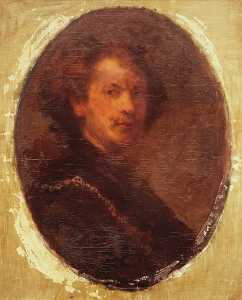Anna Huntington Stanley
Anna Huntington Stanley
Place: Yellow Springs
Born: 1864
Death: 1907
Biography:
Anna Huntington Stanley was an American Impressionist artist. She was born on April 20, 1864 in Yellow Springs, Ohio to Anna Maria Wright and General David Sloan Stanley, US Army. She died in 1907.
Her works are found in numerous institutional collections including The Smithsonian American Art Museum. An exhibition that included her work, Dutch Utopia: American Artists in Holland, 1880–1914 was featured at the Telfair Museum of Art, the Taft Museum of Art, Grand Rapids Art Museum, and the Singer Museum.
American Impressionist artist, Anna Huntington Stanley (1864–1907), dedicated her career to depicting the human experience in oil and watercolor. After studying art in Philadelphia and Paris, under esteemed tutors, her work experienced a significant lightening in the color palette and the influences of Impressionism became more evident in her work. Anna's pictures, in which she encountered and depicted the everyday activity of common rural women and children, present attractive and yet intimate scenes of the life around her - regardless of location. Her extraordinary ability to record and honor the subjects and places represented in her work earns her a permanent seat in the annals of American art history.
Anna Stanley was born in a small village in Greene County, Ohio. She arrived during the fourth year of the American Civil War; that same year Abraham Lincoln was completing his first term as president, General William Tecumseh Sherman launched his campaign, March to the Sea, and Anna’s father, U.S. Army Brigadier-general David Sloan Stanley was wounded at the Battle of Franklin. Anna was cared for by her mother, Anna Maria, among six other siblings. Her father’s military career moved the Stanley family several times in the years following the Civil War, taking them to South Dakota, Michigan, New York, Texas and Washington, DC. In spite of this transient life, the commitment of David and Anna Maria Stanley to foster an environment that valued God, education, distinctive accomplishment and culture, the family remained intimate and resilient. It was this environment that nurtured Anna's ability to interpret the world around her through her art.
Anna Stanley spent her high school years in New York where she attended the Buffalo Female Academy and was lauded for her skills in drawing and painting. Anna received instruction under Ammi Merchant Farnham (American, 1845-1922), who studied at the Royal Academy of Bavaria and the Munich Academy under Frank Duveneck. An accomplished artist and curator of the Buffalo Academy of Fine Arts (renamed in 1962, the Albright-Knox Art Gallery), Farnham's oeuvre includes atmospheric landscapes, often painted in late afternoon, depicting luminous twilight scenes, which lend much influence to many of Anna’s later paintings. Her achievements were recognized when one of her pen and ink drawings was selected for the cover illustration on The Magnet, which was published by the ladies of the Academy.
In the fall of 1882 Anna moved to Philadelphia to continue her education at The Pennsylvania Academy of the Fine Arts and improve her mastery of the human figure. She attended anatomy lectures and studied life drawing and sculpture under Thomas Eakins (American, 1844-1916) and Thomas Anshutz (American, 1851-1912) until the spring 1885. During this time, she also met Chicago artist Pauline “Lena” Dohn, a former students of the School of Art Institute of Chicago, who would later accompany Anna to Europe.
A privileged young woman, in 1887 Anna accompanied by her mother and friend, Lena, traveled to Venice and then on to Paris, where she enrolled in the Académie Julian. Renting a space on the top floor of the Hotel Oxford and Cambridge, Anna’s accommodation was connected to an adjoining room occupied by Lena. They were situated in the 1st arrondissement of Paris in close proximity to the Tuileries Garden and the Musée du Louvre, Surviving family correspondence, including illustrations, describes the experiences they had while they were there. These letters include descriptions of artists’ materials, subject matter in included in works of art, and comments about critiques received from their instructors.
Under the training of Gustave Clarence Rodolphe Boulanger (French, 1824–1888) and Jules-Joseph Lefebvre (French, 1836–1912), Anna produced figurative charcoal drawings rather than paintings; both were revered artists. Lefebvre was known for his meticulously executed portraits and nudes, and during his long career, he earned three Salon medals, was appointed to the French Academy of Fine Arts, attained the rank of Commander in the Legion of Honor, and won the coveted Prix de Rome in 1861. Gustave Boulanger, also a figure painter, was best known for his classical and Orientalist subjects. Some of his other students included Childe Hassam (1859-1935), George Hitchcock (1850-1913), Frederick William MacMonnies (1863-1937), Gari Melchers (1860-1932), Willard Leroy Metcalf (1858-1925), Elizabeth Nourse (1860-1938), Robert Reid (1862-1929), and Edmund Charles Tarbell (1862-1938) - Anna's work was in good company. Likely her awareness of the reputations of her mentors resulted in welcomed reception of their instruction. In one letter, she wrote that she received "stern criticisms" and yet recounted that they were “fair and instructive.”
More...
Wikipedia link: Click Here














